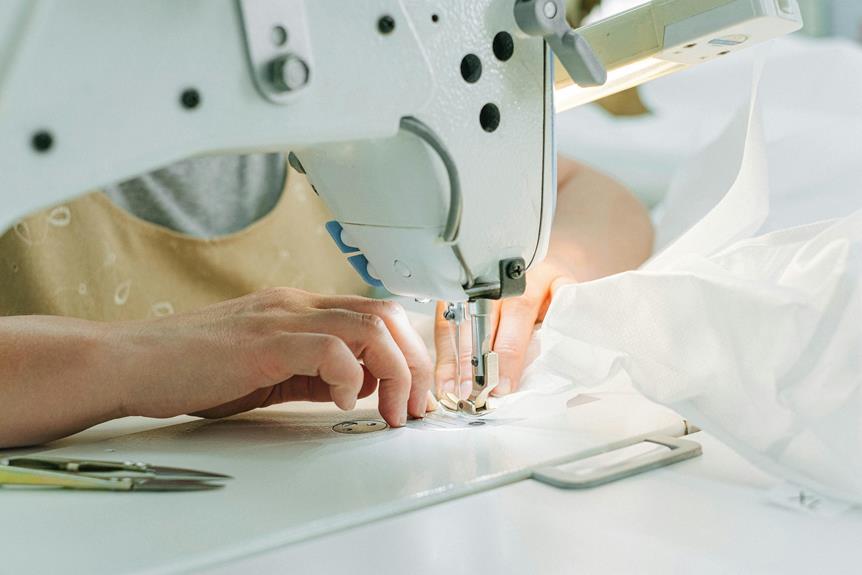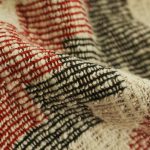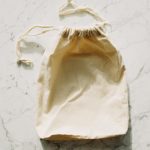When you think about microsuede, you might picture its soft texture and versatility, but have you ever considered how it's actually made? The process starts with polyester fibers derived from petroleum, which undergo a series of transformations. You'll find that the journey from raw material to the final fabric involves melting, extruding, and weaving, all of which play crucial roles in shaping its characteristics. But what happens in the finishing stages that really brings microsuede to life? Understanding these details can reveal much more than you expect.
Table of Contents
Key Takeaways
- Microsuede is made from polyester fibers, which are derived from petroleum through polymerization, ensuring durability and softness.
- Polyester pellets are melted and extruded to create long fibers, which are then cooled and drawn for strength and texture.
- Various weaving techniques, such as warp and weft or jacquard weaving, are used to achieve different textures and qualities in microsuede.
- Finishing processes like shearing, brushing, and dyeing enhance the fabric's appearance and performance, providing a plush feel and vibrant colors.
Overview of Microsuede
Microsuede is a synthetic fabric made from polyester fibers that mimic the soft feel and appearance of natural suede. This material has gained popularity due to its luxurious look and easy maintenance. You'll find microsuede in various applications, including upholstery, garments, and accessories. Its versatility makes it a favorite in both fashion and home decor.
One of the key benefits of microsuede is its durability. Unlike natural suede, it resists stains and is less prone to damage from water, making it an ideal choice for households with pets or children. Additionally, it's lightweight and breathable, providing comfort without sacrificing style.
When you choose microsuede, you're also opting for a fabric that's relatively affordable compared to its natural counterpart. Its production process involves weaving fine polyester fibers together, resulting in a plush surface that feels great against the skin. You'll appreciate how it can elevate your space or wardrobe without breaking the bank.
Raw Materials Used
When you think about microsuede, it's important to consider the raw materials that make it possible.
Primarily, polyester fibers serve as the backbone of this fabric, while specific coating materials enhance its durability and texture.
Understanding these components helps you appreciate the quality and versatility of microsuede.
Polyester Fiber Source
Polyester fibers, derived from petroleum-based products, serve as the primary raw material for creating microsuede. These fibers are crafted through a process called polymerization, where ethylene glycol and terephthalic acid are combined to form long chains of polyester.
This process allows for the production of fibers that are both durable and versatile, making them ideal for various applications, including fashion and upholstery.
Once the polyester is produced, it's extruded into fine filaments, which are then cut to the desired length. These cut fibers can be further processed to enhance their softness and texture.
The quality of the polyester directly affects the final product's feel and durability.
When selecting polyester fibers, manufacturers often opt for recycled materials to promote sustainability. This not only reduces waste but also helps conserve resources, making microsuede a more environmentally friendly choice.
As you learn about the manufacturing process, you'll see how crucial the source of polyester fiber is in determining the overall quality and performance of microsuede.
Coating Materials Used
To achieve the soft, suede-like finish of microsuede, manufacturers often apply specialized coating materials that enhance its texture and durability. These coatings not only give microsuede its luxurious feel but also protect it from wear and stains. You'll find that the choice of coating materials plays a crucial role in the final product's quality.
Here's a quick overview of some common coating materials used in microsuede production:
| Coating Material | Purpose | Benefits |
|---|---|---|
| Polyurethane | Water resistance | Easy to clean, durable |
| Acrylic | Softness and flexibility | Comfortable, lightweight |
| Silicone | Stain resistance | Long-lasting protection |
| PVC | Cost-effectiveness | Affordable, versatile |
| Teflon | Oil and stain repellency | Maintains appearance |
Fiber Production Process
The fiber production process for microsuede involves creating ultra-fine polyester strands that mimic the softness and texture of natural suede. To start, manufacturers melt polyester pellets, which are derived from petroleum-based products. Once melted, the liquid polyester is extruded through tiny spinnerets to form long, thin fibers. These fibers are then cooled and solidified, creating what's known as filament yarn.
Next, these filament strands are drawn out to increase tensile strength and improve elasticity. This step is crucial, as it ensures the fibers can withstand wear while maintaining their soft feel. After drawing, the yarn may undergo a crimping process, where it's twisted to add texture and increase volume, enhancing that luxurious suede-like appearance.
Once the fibers are prepared, they're typically cut into shorter lengths, known as staple fibers. This cutting allows for easier handling and processing in the next stages of microsuede production. It's during this fiber production that the foundation for the final product is established, setting the stage for the weaving techniques that will follow, ultimately resulting in the durable and stylish microsuede fabric you know today.
Weaving Techniques
Weaving techniques play a crucial role in transforming staple fibers into the soft, durable microsuede fabric you enjoy. There are various methods used in the weaving process, and each contributes to the final texture and appearance of the microsuede. You might be surprised to learn how these techniques affect the overall quality of the fabric.
Here's a quick overview of some common weaving techniques:
| Technique | Description |
|---|---|
| Warp and Weft | Involves interlacing vertical (warp) and horizontal (weft) threads to create a strong base. |
| Jacquard Weaving | Uses a special loom to produce intricate patterns and textures, enhancing aesthetics. |
| Satin Weaving | Produces a smooth surface with a glossy finish, giving microsuede its luxurious feel. |
| Terry Weaving | Creates loops on the fabric surface, adding depth and softness, making it more plush. |
Finishing Processes
Finishing processes elevate microsuede's quality by enhancing its softness, durability, and overall appearance. After the weaving stage, the fabric undergoes several treatments that are crucial for achieving the desired feel and performance.
One of the first steps is shearing, where the surface fibers are trimmed to create a uniform, smooth texture. This not only boosts the softness but also gives the microsuede its signature look.
Next, you might encounter processes like brushing and raising, where the fabric is treated to lift the fibers, resulting in a plush feel. These treatments help in creating that cozy, inviting texture you love in microsuede products.
Afterward, a dyeing process adds vibrant colors, ensuring the fabric looks as good as it feels.
Quality Control Measures
When it comes to producing high-quality microsuede, quality control measures are crucial.
You'll want to focus on inspecting raw materials, adhering to strict production process standards, and testing the final product.
These steps ensure that the microsuede meets the desired specifications and maintains its durability and appearance.
Raw Material Inspection
Before production begins, manufacturers conduct thorough inspections of raw materials to ensure they meet quality standards. This step is crucial for producing high-quality microsuede, as any defects in the raw materials can compromise the final product.
Here are three key aspects inspected during this stage:
- Material Composition: Manufacturers check the fibers to confirm they align with specifications, ensuring the right blend of polyester and polyamide for durability and texture.
- Color Consistency: Color matching is vital. Inspectors examine the dye batches for uniformity, as inconsistencies can lead to visible discrepancies in the finished microsuede.
- Physical Defects: Any signs of damage, such as tears or irregularities in the fibers, are identified. Raw materials must be free of impurities to maintain the fabric's integrity and appearance.
Production Process Standards
Maintaining rigorous quality control measures throughout the production process ensures that the microsuede meets the highest standards of durability and aesthetics.
You'll find that each stage of production involves specific checkpoints to monitor quality. From the initial blending of polyester and nylon to the weaving of the fabric, every step is carefully scrutinized.
During the manufacturing phase, you can expect regular inspections to check for consistency in texture and color. Automated systems may be used to detect defects in real time, allowing for immediate adjustments. Workers are trained to identify any irregularities, ensuring that flawed materials don't make it through to the final stages of production.
Additionally, the machinery used must undergo routine maintenance and calibration to maintain precision. This helps prevent issues that could compromise the fabric's quality. By adhering to established production standards, manufacturers can ensure that the microsuede not only looks good but also withstands wear and tear.
Ultimately, these quality control measures contribute significantly to the overall performance of the microsuede, enabling you to enjoy a product that meets your expectations for both function and style.
Final Product Testing
Final product testing plays a crucial role in ensuring that the microsuede meets all quality standards before it reaches consumers. This process involves several key assessments that evaluate the fabric's durability, feel, and overall performance. You wouldn't want to purchase a product that doesn't meet your expectations, right?
Here are three essential quality control measures taken during final product testing:
- Abrasion Resistance: Testing how well the microsuede withstands friction helps determine its longevity. Fabrics are rubbed against abrasive surfaces to simulate years of wear.
- Colorfastness: It's vital to ensure that the color of the microsuede doesn't fade or bleed during washing or exposure to light. Tests are conducted under various conditions to guarantee lasting vibrancy.
- Water Resistance: Since microsuede is used in various applications, testing its ability to repel water is crucial. This ensures that the fabric maintains its integrity and appearance even when exposed to moisture.
Through these rigorous testing processes, manufacturers can confidently deliver a high-quality product that meets your needs and expectations.
Applications of Microsuede
Microsuede is widely used in furniture upholstery, clothing, and accessories due to its soft texture and durability. When you choose microsuede, you're opting for a fabric that not only feels luxurious but also stands the test of time. Imagine sinking into a plush microsuede sofa after a long day, or wrapping yourself in a cozy microsuede blanket on a chilly evening.
Here's a quick look at some applications of microsuede that might resonate with you:
| Application | Emotion Evoked | Benefits |
|---|---|---|
| Furniture Upholstery | Comfort & Warmth | Soft touch, durability |
| Clothing | Style & Elegance | Versatile, easy to clean |
| Accessories | Fashion & Function | Lightweight, trendy |
Whether you're designing a living space or updating your wardrobe, microsuede offers endless possibilities. Its versatility allows it to fit seamlessly into any aesthetic, providing both practicality and style. So next time you're considering materials, remember how microsuede can elevate your everyday experience!
Frequently Asked Questions
Is Microsuede Environmentally Friendly?
You might find microsuede isn't the most environmentally friendly choice. While it's durable and easy to clean, its production involves synthetic materials, which can contribute to pollution and aren't biodegradable, impacting the environment negatively.
How Does Microsuede Compare to Traditional Suede?
When you compare microsuede to traditional suede, you'll find microsuede's more durable, easier to clean, and often less expensive. Traditional suede, however, boasts a unique texture and feel that many still prefer.
Can Microsuede Be Recycled?
Yes, microsuede can be recycled, but it's essential to check local facilities. Since it's a polyester-based fabric, certain recycling centers accept it. You should always look for options to minimize waste and help the environment.
What Are Common Care Tips for Microsuede Products?
To care for your microsuede products, regularly vacuum them to remove dust. Spot clean any stains with a damp cloth and mild soap, avoiding harsh chemicals. Also, keep them away from direct sunlight to prevent fading.
Is Microsuede Hypoallergenic?
Yes, microsuede is generally hypoallergenic. It doesn't attract dust mites or allergens, making it a great choice for those with sensitivities. Just keep it clean, and you'll enjoy a comfortable, allergy-friendly environment.
- How to Choose the Right Fabric for a DIY Backyard Shade Structure Scrim - June 26, 2025
- Outdoor Scrim Fabric: Choosing Weather-Resistant Materials - June 26, 2025
- A Guide to Chinese Laid Scrims for Industrial Applications - June 26, 2025







